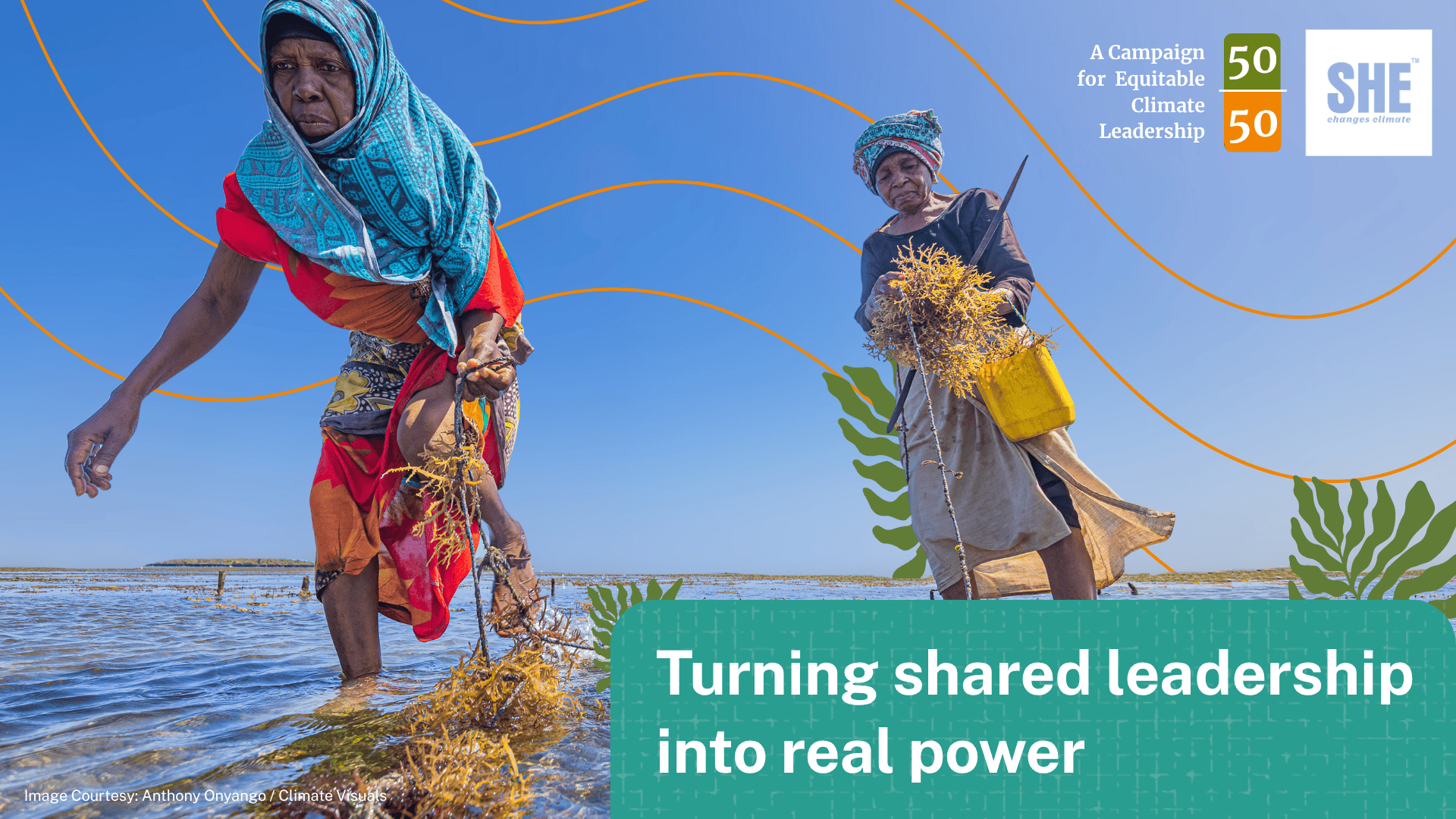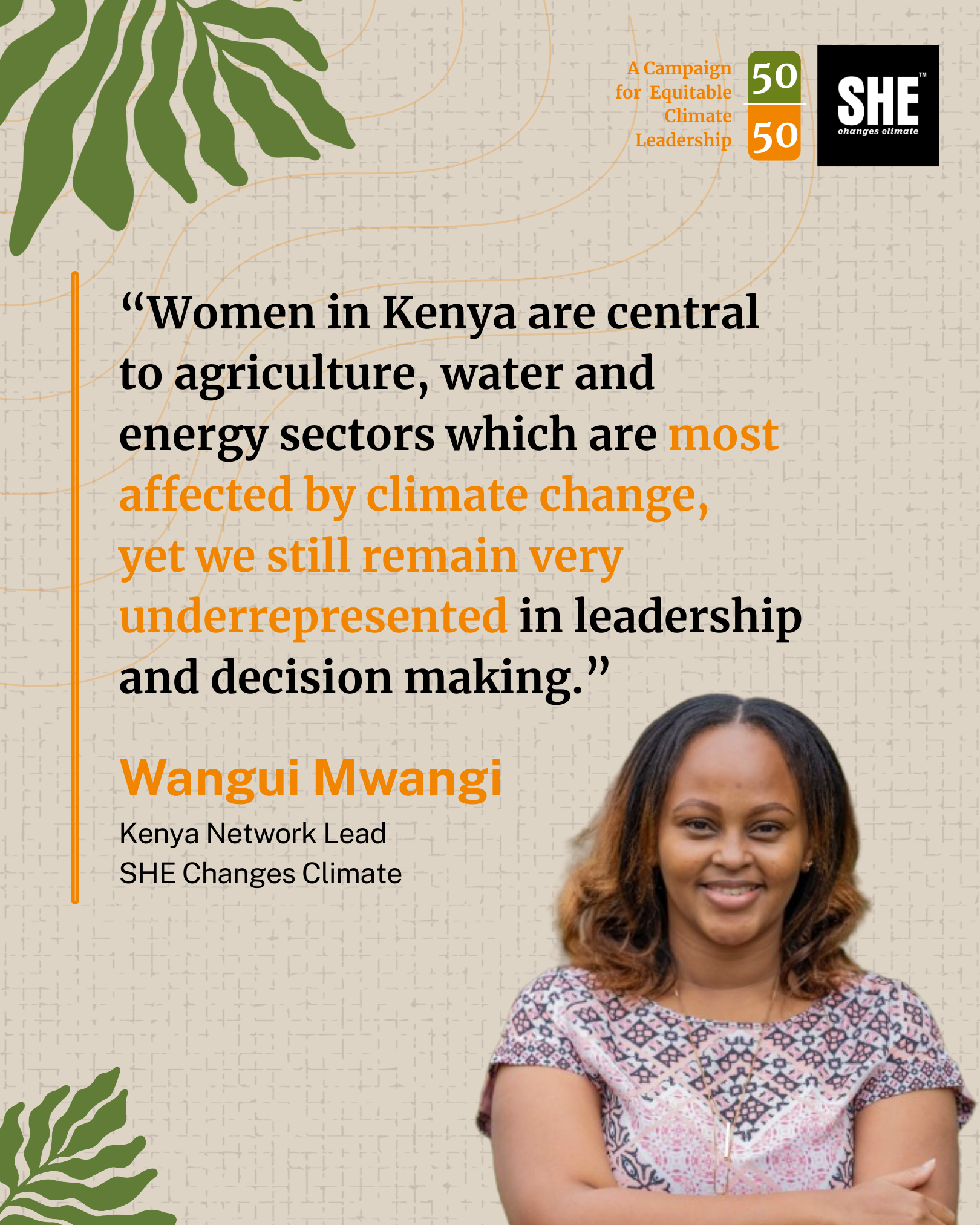The Progress Paradox of Kenya’s Gender-Responsive Climate Strategy
Because equality isn’t just a goal, it’s the foundation.
A movement to build a green workforce has taken off in Kenya. Founded, led and driven by women in partnership with the Ministry of Education and public universities, The Green Careers Caravan takes opportunities in the green economy to the doorstep of Kenya’s youth, especially women—one conversation, one green-skilling at a time.
It is here, in these everyday spaces of learning, skill building, and work that Kenya’s next generation of climate leaders could emerge. About 40,000-240,000 green jobs are projected to open up by 2030, and women — 62.2% of the country’s workforce, already on the frontlines of climate impacts, could be spearheading this future.
Bridging the gap between policy and power
Kenya has long recognised the importance of women’s representation in governance. The Constitution (2010) guarantees equality, and its climate frameworks, including the Climate Change Act (2016, amended in 2023), mandates gender mainstreaming in climate governance. The implementation, primarily through the National Climate Change Action Plan (NCCAP) recognises gender equality as a theme cutting across seven priority areas of action —food, water, health, forestry, disaster risk reduction, energy and transportation and manufacturing. The country also has a National Gender and Equality Commission (NGEC) that sets out guidelines on translating gender equity into public policy.
These are significant strides in making climate action equitable and have led to more women being appointed to key positions in environmental agencies, like in Kenya's Ministry of Environment and the NGEC, for instance.
But representation still largely leans towards presence rather than power.
“Women in Kenya are central to agriculture, water and energy sectors, which are most affected by climate change, yet we still remain very underrepresented in leadership and decision making,” says Wangui Mwangi, Kenya Network Lead of SHE Changes Climate (SCC).
Women make up less than a third of Senate seats and only around a quarter of National Assembly seats. Put together, men hold 72.5% seats in the Parliament. Kenya’s constitution mandates that no more than two-thirds of the members can be of the same gender.
Equal Policy Power: Shaping change together
A senior scientist at Kenya’s Meteorological Department and the country’s focal point to the Intergovernmental Panel on Climate Change (IPCC), Patricia Nying’uro is an emblem of women in technical and decision-making spaces.
“My own journey has only been possible because of mentorship that I have received, not just from women but also from men who are allies and understand the challenges that we face and can recognise the privilege that they have,” Patricia says.
Her work focuses on documenting the impacts of climate change, and interventions at the local level embody “equal policy power” — science translating into policy through actionable information, and an expertise that sits at the intersection of science, governance, and community needs. True equity in policy power would mean that more women like Patricia are part of a generation of scientists, planners, and negotiators shaping policy from the start.
Kenya’s implementation of its Nationally Determined Contributions (NDCs) and National Adaptation Plan (NAP) is an opportunity to do this—embed gender equality as a structural principle with data, equitable budgets, and accountability tools that ensure women’s participation is measurable, not symbolic.
“Women are well-positioned to build the bridges across sectors that this transition demands. The opportunity is not just to participate but to influence, to innovate and lead,” as Kathryn Mumbua, Project Manager, East Africa, Smart Freight Project, says.
Capital that fits women’s realities
From land restoration to climate-smart agriculture to conservation technology, women in Kenya are powering solutions that tackle climate change head-on. But to grow their businesses and ensure that these solutions have the impact that they can, some questions need answers: how do we look at women's finances? How do we build their capacity to be able to meet and get to where the investors are? And crucially, how does climate finance meet women where there are?
“We don’t need to fix the women, we need to fix the capital and the system,” says Carey Bohjanen, who is the founder of The Rallying Cry, an initiative that focuses on increasing gender equity for climate innovations in Africa.
The system, never designed with them in mind—from collateral requirements to risk perception to short grant cycles and a narrow definition of what counts as “innovation”— keeps many women outside the door of climate finance.
Equitable investment can mean capital fit for purpose, that trusts women to lead, innovate, and deliver. And models do exist: women-focused funds with risk-sharing guarantees like those piloted in Southern Africa, payback cycles that take into account cash flows, mentorship pipelines and more. In fact, Kenya’s National Gender and Equality Commission has called for climate finance to be gender-responsive.
From frameworks to follow-through
Kenya has the policy groundwork, institutional will, and the talent to lead Africa’s gender-responsive climate transition. The missing piece is not vision or intent but implementation and monitoring of its strong legal and institutional frameworks.
To advance women’s leadership in climate action, the SCC Kenya network recommends:
Institutionalisation of mandatory quotas for women's representation in all national and delegation-level climate decision-making bodies. This will ensure that qualified women are present and prepared.
Structured mentorship programs and capacity-building opportunities to empower women leaders for policy and technical spaces.
Technical training for women in emerging sectors and policy negotiation spaces.
Policy makers to ensure gender-responsive implementation of climate policies.
Approaching climate and gender not as one track, but as one with many intersections shaped by culture, history and more.
In Kenya, the move from climate ambition to climate action is already visible — on university lawns, in labs, and in communities rebuilding from climate stress. The next step is to make this momentum systemic: to turn participation into power, policy into permeance and progress into permanence.
50/50, a campaign for equitable climate leadership is demanding more than just acknowledgment. We are calling for Equal Participation, Equitable Investment and Equal Policy Power. Read more about the campaign here . You can also read our piece on India, a country revisiting its national climate commitments, where there is a sharp reminder that when women lead, climate action works.


